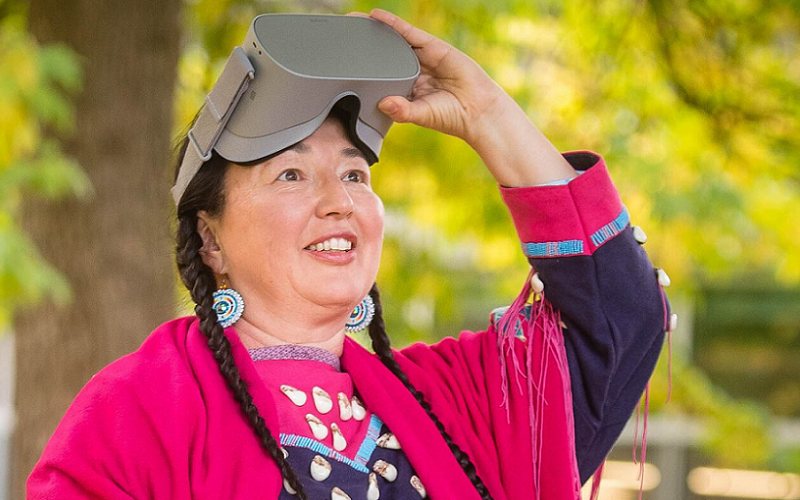Indigenous languages are an important part of the world’s cultural heritage, yet many of them are facing the threat of extinction. With the rapid advancement of technology, it is crucial to understand the impact it has on the development and preservation of these languages. On one hand, technology has the potential to assist in language revitalization efforts and provide access to language resources. On the other hand, it can contribute to the decline of traditional language transmission and cultural assimilation.
What Are Indigenous Languages?
Indigenous languages refer to the traditional and historical languages that are native to a particular region or community, and are typically passed down from generation to generation. These languages are often unique and hold significant cultural and historical value, as they reflect the customs, beliefs, and practices of the people who speak them. Indigenous languages are also an important part of the world’s linguistic diversity, and many of them are endangered due to a variety of factors such as globalization, migration, and the influence of dominant cultures and languages. The preservation of Indigenous languages is crucial not only for the communities that speak them, but also for the world as a whole, as they provide a window into the cultural and historical richness of different regions and communities.
Importance of Indigenous Languages
Indigenous languages play a vital role in preserving cultural and linguistic diversity, and their preservation is crucial for the future of both Indigenous communities and the world as a whole.
- Cultural Identity: Indigenous languages are an integral part of a community’s cultural identity and are often tied to their traditions, beliefs, and practices. They are a way for people to connect with their heritage and pass on their cultural legacy to future generations.
- Linguistic Diversity: Indigenous languages are a crucial part of the world’s linguistic diversity, and their preservation helps to maintain this diversity. Each language has its own unique grammar, vocabulary, and cultural significance, and losing a language means losing a unique cultural expression.
- Knowledge Preservation: Indigenous languages often contain a wealth of knowledge and wisdom about the environment, natural resources, and traditional practices. They are a valuable resource for researchers and can provide insight into the history and culture of a particular region or community.
- Education: Indigenous languages are often used as a medium of instruction in schools and can be an important tool for preserving cultural knowledge and traditions. They can also serve as a source of inspiration and motivation for children and young people.
- Empowerment: The preservation and revitalization of Indigenous languages can provide a sense of pride and empowerment for the communities that speak them. It can also help to raise awareness and promote greater understanding of the cultural and linguistic heritage of Indigenous peoples.

The Negative Impact of Technology on Indigenous Languages
The rapid advancement of technology has had a profound impact on many aspects of society, and Indigenous languages are no exception. While technology has the potential to support language revitalization efforts, it can also have a negative impact on the preservation of Indigenous languages.
Loss of Traditional Language Transmission
With the increased use of technology and the internet, many people are spending more time online and less time speaking their Indigenous language. This can lead to a loss of traditional language transmission from one generation to the next and a decline in the use of Indigenous languages.
Cultural Assimilation
The spread of technology and the internet can also contribute to cultural assimilation, as people are exposed to dominant cultures and languages. This can lead to a loss of interest in Indigenous languages and cultures, and can cause Indigenous languages to become endangered.
Decreased Use of Indigenous Languages
The prevalence of technology and the internet has led to a decrease in the use of Indigenous languages, as many people are relying more on English and other dominant languages for communication. This can lead to a decline in the overall proficiency of Indigenous languages and make them more vulnerable to extinction.
Loss of Language Diversity
The loss of Indigenous languages also means a loss of linguistic diversity, as each language has its own unique grammar, vocabulary, and cultural significance. This can have a negative impact on the cultural and linguistic heritage of Indigenous communities and the world as a whole.

The Positive Impact of Technology on Indigenous Languages
Despite the negative impacts, technology can also have a positive impact on Indigenous languages, and can be a valuable tool for language revitalization efforts. Because of this it is important to utilize technology in a way that supports these efforts. By leveraging the power of technology, we can help to ensure the survival of Indigenous languages and the cultural heritage they represent.
Increased Access to Language Resources
Technology has made it easier for people to access language resources, such as dictionaries, grammar guides, and audio recordings. This can be a valuable tool for language learners and can help to support language revitalization efforts.
Online Language Learning
Technology has also made it possible for people to learn Indigenous languages online, through language learning apps, websites, and online courses. This can provide greater access to language education and can help to increase the overall proficiency of Indigenous languages.
Digital Preservation of Language Archives
Technology can also be used to preserve Indigenous language archives, through the creation of digital audio and video recordings, text archives, and other resources. This can help to ensure the preservation of Indigenous languages for future generations.
Increased Visibility and Advocacy for Indigenous Languages
Technology has also made it possible to raise awareness and advocate for Indigenous languages, through the use of social media, online communities, and other platforms. This can help to bring greater attention to the importance of Indigenous languages and the need for their preservation.

Case Studies of Technology’s Impact on Indigenous Languages
To better understand the impact of technology on Indigenous languages, it is useful to examine real-world examples of its effects. These case studies demonstrate the potential for technology to positively impact Indigenous languages, and they highlight the importance of utilizing technology in a way that supports language revitalization efforts and preserves cultural and linguistic heritage. However, they also highlight the need to be mindful of the potential negative impacts of technology and to work to ensure that technology is used in a way that supports the preservation and revitalization of Indigenous languages.
Example of a Successful Language Revitalization Effort Utilizing Technology
One example of a successful language revitalization effort utilizing technology is the Maori language revitalization effort in New Zealand. The Maori language was in decline for many years, but a concerted effort was made to revitalize the language in the late 20th century.
This effort was supported by the use of technology, including the creation of Maori language learning resources, such as textbooks, audio recordings, and language learning software. Additionally, the government of New Zealand established language nests, where young children could be immersed in the Maori language and learn from fluent speakers.
The use of technology in the Maori language revitalization effort has been instrumental in increasing the overall proficiency of the language and has helped to ensure its continued survival. Today, the Maori language is widely spoken in New Zealand and is considered an important part of the country’s cultural heritage.
This successful revitalization effort serves as a model for other Indigenous language revitalization efforts and demonstrates the potential for technology to play a positive role in preserving and revitalizing Indigenous languages.
Example of a Community Using Technology to Preserve and Share Their Language
One example of a community using technology to preserve and share their language is the Hawaiian language revitalization effort. The Hawaiian language was once a widely-spoken language in Hawaii, but declined in use due to cultural suppression and the influence of English. In the late 20th century, a concerted effort was made to revitalize the language, and technology has played a key role in this effort.
For example, the community has used technology to preserve and share the Hawaiian language through the creation of digital audio and video recordings of fluent speakers, as well as the development of online language learning resources. Additionally, the Hawaiian language is now being taught in schools, and technology is being used to support language instruction and to make Hawaiian language materials more accessible to students and teachers.
Through these efforts, the Hawaiian language is being revitalized and is becoming more widely spoken, and technology has been instrumental in supporting this revitalization effort. This serves as a powerful example of how technology can be used to preserve and share Indigenous languages and highlights the importance of utilizing technology in a way that supports the preservation and revitalization of Indigenous languages.

